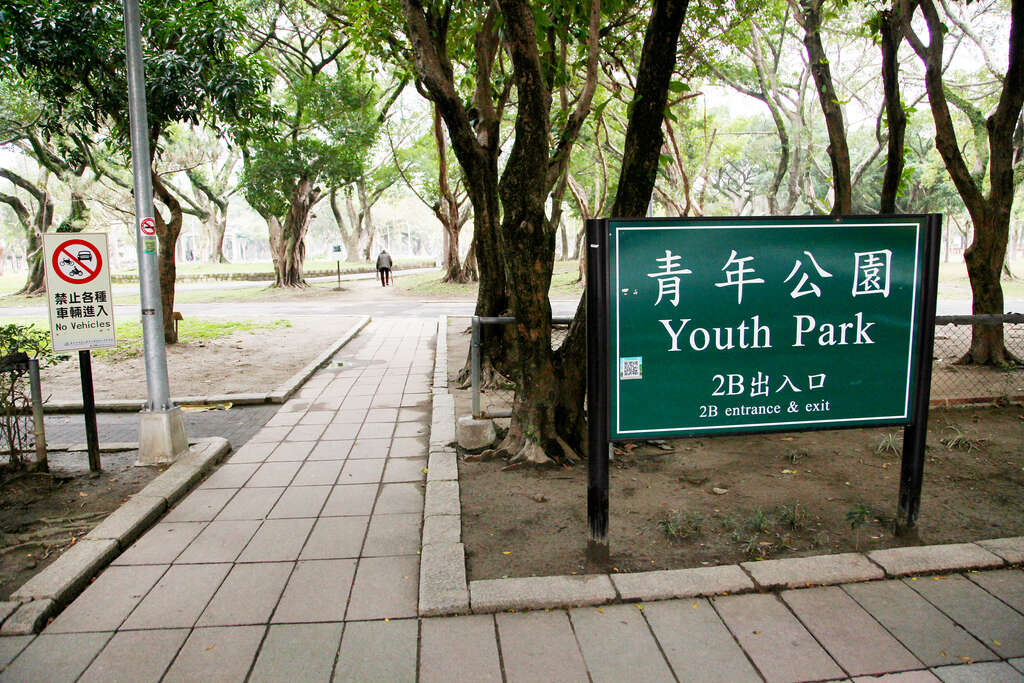Youth Park Introduction
Youth Park is a comprehensive public park in the Greater Taipei metropolitan area, located in the Wanhua District on the west side of Taipei City. It is bordered by Guoxing Road to the east, Xinping Youth Road to the west, Shuiyuan Road to the south, and Youth Road to the north, covering an area of 24.44 hectares. The land has its roots in the Japanese occupation era, originally serving as a military training ground before being converted into an airport. Because it is located at the southern end of Taipei City, in contrast to the northern Songshan Airport, it was named the Southern Airport. In 1953, in cooperation with the Ministry of National Defense, the Taipei Country Club established the Taipei Golf Club. On the Youth Day in 1974, according to the directive of the Executive Yuan, the Taipei City Government took over the golf course, transforming it into Youth Park. The formal takeover occurred in October of that year, and it was completed in September 1977, becoming a popular leisure destination for Taipei citizens. The park is well-equipped, surrounded by lush greenery and beautiful scenery. Sports facilities include a golf course (entrance fee applicable) along Guoxing Road, eight swimming pools along Shuiyuan Road, and six tennis courts on the southern side of the park. Additionally, there is a billiard room in the swimming pool building for billiards. Free recreational facilities include basketball courts, badminton courts, baseball fields, a skating rink, tennis practice walls, and outdoor sports fields scattered throughout the park. Other amenities include a bonsai house, reading room, audiovisual classroom, outdoor music stage, and a police station to serve the citizens and tourists. In addition to various hardware service facilities, the park's landscape planning, green facility layout, and plant distribution are central to constructing a beautified park. The park's main entrance features a floral bed arranged in a radiating pattern, planted with vibrant flowers such as impatiens, cockscomb, string flowers, cigar flowers, butterfly flowers, and golden dewdrop. Behind this, shrubs like azaleas, status red, croton, Chinese fir, and ginseng are planted, creating a beautiful and colorful atmosphere upon entering the park. The central area of the park features extensively planted grass, with lush and tidy green turf surrounded by banyan trees forming a canopy, creating a shaded green tunnel. The view from a distance resembles a sea of green, and wandering within this area feels like being immersed in a forest bath, refreshing both body and mind. Additionally, there are coniferous forests (Araucaria) planted beside the lawn area, and many citizens gather there for morning exercises, benefiting their health. Behind the lawn area, a waterway connects to the Nine Curves Bridge in the northeastern part of the park. On both sides of the pond, aquatic plants are richly planted, with fountains enhancing the landscape. Furthermore, maple trees are extensively planted on the eastern side of the baseball field; these trees are mature and create a maple forest, which becomes part of the winter scenery during leaf-fall season. The park is also surrounded by azaleas, which bloom in the spring, adding dazzling colors to the park’s beauty. Moreover, throughout the park, there are a mix of trees, shrubs, grass, flower beds, benches, pavilions, health paths, and sculptures. The wide park paths provide multiple scenic spots, making it a masterpiece of a large comprehensive park. Youth Park, with its vast area and diverse, well-equipped facilities, offers the public spaces for relaxation, sports, education, and rehabilitation, catering to all ages, from youth to the elderly, whether able-bodied or disabled. The park’s beauty involves not only creating beautiful landscapes but also encouraging community engagement to appreciate, cherish, and enjoy the fruits of public construction together.
















